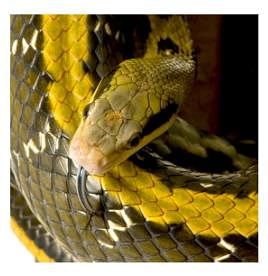Class 4 Exam > Class 4 Tests > Science Olympiad Class 4 > Olympiad Test: Animals -2 - Class 4 MCQ
Olympiad Test: Animals -2 - Class 4 MCQ
Test Description
10 Questions MCQ Test Science Olympiad Class 4 - Olympiad Test: Animals -2
Olympiad Test: Animals -2 for Class 4 2025 is part of Science Olympiad Class 4 preparation. The Olympiad Test: Animals -2 questions and answers have been
prepared according to the Class 4 exam syllabus.The Olympiad Test: Animals -2 MCQs are made for Class 4 2025 Exam. Find important
definitions, questions, notes, meanings, examples, exercises, MCQs and online tests for Olympiad Test: Animals -2 below.
Solutions of Olympiad Test: Animals -2 questions in English are available as part of our Science Olympiad Class 4 for Class 4 & Olympiad Test: Animals -2 solutions in
Hindi for Science Olympiad Class 4 course. Download more important topics, notes, lectures and mock
test series for Class 4 Exam by signing up for free. Attempt Olympiad Test: Animals -2 | 10 questions in 20 minutes | Mock test for Class 4 preparation | Free important questions MCQ to study Science Olympiad Class 4 for Class 4 Exam | Download free PDF with solutions
Olympiad Test: Animals -2 - Question 1
The beetle has a life cycle similar to the butterfly’s. At which stage of the beetle’s life cycle does the beetle not feed?
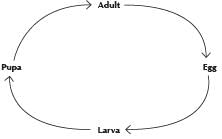

Detailed Solution for Olympiad Test: Animals -2 - Question 1
Olympiad Test: Animals -2 - Question 2
The diagram given below illustrates the process of Nymph Cockroach
Cockroach
 Cockroach
Cockroach
Detailed Solution for Olympiad Test: Animals -2 - Question 2
Olympiad Test: Animals -2 - Question 3
Which of the following animals does not have the life cycle given below?
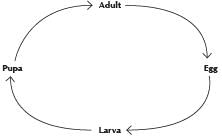

Detailed Solution for Olympiad Test: Animals -2 - Question 3
Detailed Solution for Olympiad Test: Animals -2 - Question 4
Olympiad Test: Animals -2 - Question 5
Match the following larval stages in Column - I with the adult ones in Column - II.
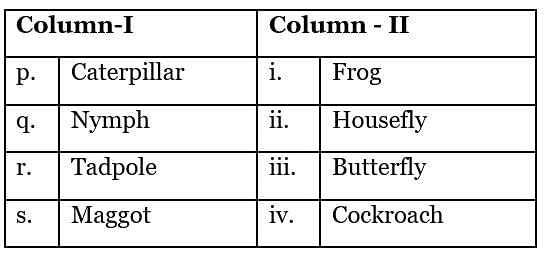
Detailed Solution for Olympiad Test: Animals -2 - Question 5
Olympiad Test: Animals -2 - Question 6
Which of the following sets of animals represents a group of animals?
Detailed Solution for Olympiad Test: Animals -2 - Question 6
Olympiad Test: Animals -2 - Question 7
Which of the following are gnawing animals?
1. Beaver
2. Rat
3. Squirrel
4. Guinea pig
Detailed Solution for Olympiad Test: Animals -2 - Question 7
Detailed Solution for Olympiad Test: Animals -2 - Question 8
Olympiad Test: Animals -2 - Question 9
Look at the picture below:

Q. After some time, a will come out of the case shown above.
Olympiad Test: Animals -2 - Question 10
Study the classification table shown below.
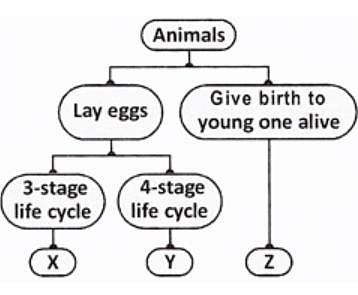
What could X, Y, Z represent?
Detailed Solution for Olympiad Test: Animals -2 - Question 10
|
53 videos|44 docs|59 tests
|
Information about Olympiad Test: Animals -2 Page
In this test you can find the Exam questions for Olympiad Test: Animals -2 solved & explained in the simplest way possible.
Besides giving Questions and answers for Olympiad Test: Animals -2, EduRev gives you an ample number of Online tests for practice



